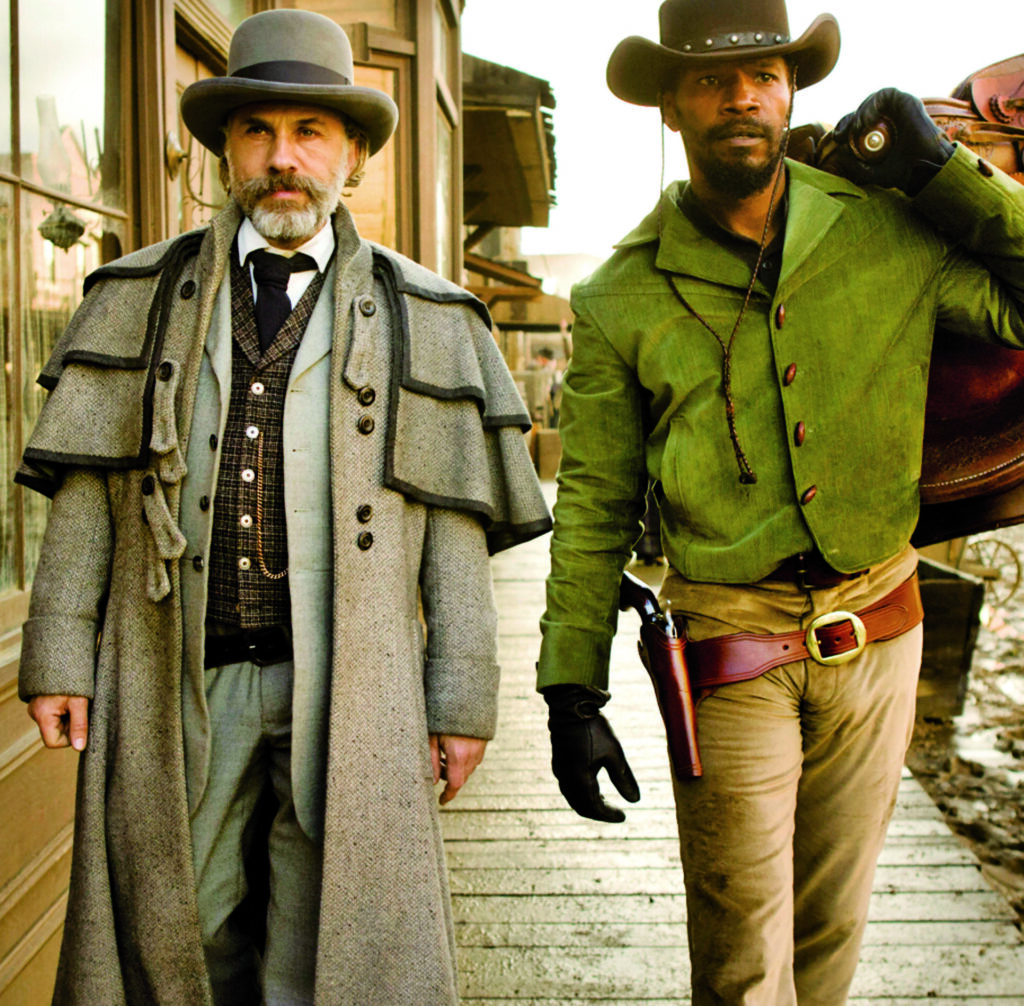
Quentin Tarantino’s Django Unchained (2012), a post modern reconsideration of slavery.
Django Unchained is a re-visitation of the traditional American lone hero, a brave character who is on a mission to take revenge upon the wrongs of slavery, deeply rooted in the 18th century imperialism.
The rise of the British Empire during the eighteenth century, fuelled by enslaved labour on plantations in the North Atlantic world, led to economic and cultural growth in both Britain and America. Transatlantic slavery became a rewarding trade dominated by the British; between 1660 and 1807: roughly eleven thousand British ships transported at least three million enslaved men, women, and children from Africa to European colonies in North America and the Caribbean.
In this postmodern epic movie, echoing Sergio Leone’s westerns, Django is a freed black slave, helped by a white man to fight for his rights. Dr. Schultz in fact is a German bounty hunter who is on a mission to capture criminals but treats Django with respect. The two of them make a pair typical of American movies, but very anachronistic. They are like father and son, like Friday and Robinson in the novel by the English writer Daniel Defoe.
The film by Tarantino deals with slavery, equality and diversity with both cruelty and irony at the same time and is set in an age (19th century) when slave-owners still considered the Afro-American slaves as inanimate objects. This had happened for decades, ever since the Founding Father had colonized America in the early Seventeen century. Slavery and equality have been very debated social, political and philosophical issues ever since.
